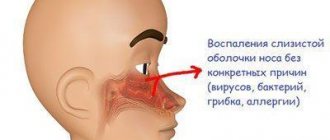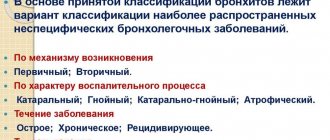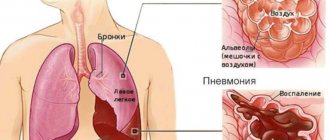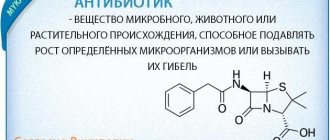Causes and mechanisms
The mechanisms of sweating are designed to ensure the consistency of the body's thermoregulation. The evaporation of liquid from the surface of the skin leads to their cooling. In addition, some metabolic products that are subject to excretion are removed through sweat. And fever is an important stimulus for increasing sweat production. The body strives to release excess thermal energy to the environment, peripheral vessels dilate, and the skin glands begin to intensively produce liquid secretions. This should provide cooling to the surface tissues and reduce the overall temperature.
This mechanism is observed in many conditions with fever. If we talk about its combination with a cough, then most often we are talking about respiratory diseases of an infectious nature. These include:
- ARVI and influenza.
- Pneumonia.
- Whooping cough.
- Tuberculosis.
Increased sweating is also observed with a common cold, when the room is hot and dry. But the mechanism of the phenomenon under consideration may be somewhat different - without connection with thermoregulation. The fact is that the function of the sweat glands depends on the activity of the autonomic system: the balance of the sympathetic and parasympathetic departments. And it can be disrupted by stress or neurocirculatory dystonia. We cannot exclude other conditions of a non-infectious nature in which hyperhidrosis is observed:
- Bronchial asthma.
- Foreign bodies in the respiratory tract.
- Thyrotoxicosis.
- Lymphogranulomatosis.
It should also be noted that cough in children may be a sign of one condition, and increased sweating - a completely different one. They just coincided in time and need to be considered separately. Therefore, the problem may not be as simple as many would like. You certainly can’t do without a doctor: only he will be able to carry out differential diagnostics and indicate the cause of disorders in the child’s body.
The origin of cough and excessive sweating varies. It must be determined during a diagnostic examination.
How are cough and sweating related?
With a strong cough, the child may experience increased sweating. In most cases, it is one of the symptoms of an acute viral infection and is accompanied by fever. By removing fluid through the skin, the body tries to reduce the temperature. Sweating increases during febrile syndrome, this is especially noticeable with a sharp increase or decrease in the thermometer readings. Temperature surges during respiratory infections are often accompanied by a runny nose. Cough combined with night sweats is not a separate disease, but a secondary form of a cold or flu. Prolonged manifestation of these symptoms may indicate a bacterial infection.
When coughing, the child feels weakness, lethargy, shortness of breath and chronic fatigue. This may indicate the presence of diseases such as bronchitis, tuberculosis, asthma, ARVI, pneumonia or influenza. Other causes of cough and sweating in a child are: decreased immunity, arterial hypotension, dysfunction of the central and peripheral nervous system. Parents may notice that the child gets tired faster, learns worse, or refuses food. If the patient begins to complain of fatigue in the first half of the day, night sleep is accompanied by coughing and increased sweating, we are talking about a cold that the child suffers on his feet. Children cannot accurately describe their condition, so parents should pay attention to emerging symptoms and promptly take their son or daughter to the pediatrician.
If weakness and shortness of breath are accompanied by a dry cough, the sputum is not removed, but stagnates in the bronchi. The intensity of symptoms of respiratory failure increases, headaches, nausea and vomiting appear. As a rule, no increase in temperature is observed. At night, the child may sweat, but during the day there may not be excessive secretion of fluid through the skin. Vitamins and walks in the fresh air help restore the body after colds and infectious diseases.
Symptoms
Determining the cause of a child’s disorder begins with an analysis of the clinical picture. This requires assessing all the symptoms observed in the patient. Subjective information is provided by parents and children themselves when making complaints. And objective data are obtained during a physical examination: inspection, palpation, auscultation and percussion.
ARVI and influenza
The most common among all new cases of morbidity are acute respiratory infections. They are caused by various viruses and are characterized by an airborne transmission mechanism. Among the common symptoms, it is necessary to note the intoxication syndrome, manifested by fever (from moderate to high), body aches, malaise and fatigue. Children's appetite decreases, they become lethargic and less active. Characteristic signs of damage to the respiratory tract are:
- Runny nose.
- Sore throat.
- Cough (mostly dry).
Nasal breathing is difficult, upon examination of the pharyngeal mucosa, hyperemia and granularity of the posterior wall are revealed, the tonsils are often loosened and swollen. Cough occurs as a result of pharyngitis or tracheitis, but may be the result of mucus draining from the nasopharynx. Severe night sweats usually occur when the fever drops. Then the parents notice that the baby’s head and body become wet.
Pneumonia
If the infection affects the lower respiratory tract, pneumonia may develop. Inflammation of the lungs is more severe. The temperature rises, general weakness is noted, and headaches occur. The cough is dry at first, but after a while it becomes wet. With lobar pneumonia, the sputum becomes rusty, it becomes more difficult to breathe (shortness of breath), and chest pain occurs. During a physical examination, a focus of infiltration is determined in the lungs, in the area of which the percussion sound is dulled, moist (fine- and medium-bubble) rales and crepitus are heard, and breathing is weakened. A friction noise of the pleura may appear as a result of reactive inflammation of its visceral layer.
Whooping cough
Whooping cough is considered a common childhood infection. And although vaccinations are carried out against it everywhere, the disease has not been defeated. Whooping cough begins with a period of catarrhal changes, which is manifested by low-grade fever, slight coughing, and malaise. But after one or two weeks the child’s condition worsens. The cough takes on a paroxysmal character, becoming strong and debilitating.
The attacks appear suddenly, often in the evening or at night. They are characterized by a series of reflex convulsive tremors, after which a wheezing inhalation is observed (the so-called reprise). Then the cycle is repeated again (up to 15 times). At this time, the baby’s face swells, turns red or blue, he breaks into a sweat, and psychomotor agitation is observed. The attack ends with the discharge of viscous transparent sputum and vomiting. The greatest danger is the possibility of suffocation (asphyxia).
With whooping cough, coughing attacks are observed, which are accompanied by anxiety and sweating.
Tuberculosis
The problem of tuberculosis remains relevant for the countries of the post-Soviet space. This chronic infection has a favorite localization - the lungs. But the clinical signs of the disease are initially nonspecific:
- General weakness.
- Night sweats.
- Low-grade fever.
- Pale skin.
- Poor weight gain.
- Enlarged lymph nodes.
The child complains of fatigue, eats poorly, does not do well at school, and looks sick. Then coughing appears, which becomes protracted. In the future, the sputum may contain streaks of blood, shortness of breath appears, and intoxication increases, which indicates the spread of the process. Caseous pneumonia occurs, the bacteria often spread throughout the body, causing meningitis, damage to the kidneys and bones.
Bronchial asthma
Children with increased allergic mood may develop bronchial asthma. This is a disease in which spasm of the lower respiratory tract (small bronchi), swelling of their mucosa and increased secretion occurs. Changes in the respiratory tract provoke the following symptoms:
- Shortness of breath (difficulty in exhaling).
- Cough.
- Difficult to separate (vitreous) sputum.
A characteristic symptom of bronchial asthma is an attack of suffocation. It begins suddenly and is manifested by wheezing, in which auxiliary muscles (cervical, intercostal, thoracic) are involved. The child is excited and in a forced position: he leans his hands on a chair or window sill, tilting his torso forward. At this time, sweating occurs without fever, the chest is expanded, the skin is pale, and acrocyanosis appears. Auscultation reveals wheezing, which can be heard even at a distance, and the percussion sound acquires a boxy tone.
Thyrotoxicosis
Increased sweating is also observed with thyrotoxicosis. This is a condition caused by increased production of thyroid hormones. In turn, the disease is characterized by disturbances in various body systems. The polymorphism of clinical manifestations is associated with the influence of thyroid hormones on metabolism and energy production. The most common signs include the following:
- Irritability, anxiety.
- Intolerance to hot weather.
- Weight loss with increased appetite.
- The skin is moist, warm, “velvety.”
- Protrusion of the eyeballs (exophthalmos).
- Increased heart rate, arrhythmias.
- Enlargement of the thyroid gland (goiter).
The pathology may be accompanied by a cough. Its occurrence is associated with pressure from the enlarged thyroid gland on neighboring organs, primarily nerves. At the same time, there is a feeling of a lump in the throat, even difficulty swallowing and breathing. When the size of the organ is normalized, these symptoms disappear.
With thyrotoxicosis, there is an increase in heat production, which causes increased sweating. A cough is associated with the effect of an enlarged thyroid gland on the laryngeal nerves.
Lymphogranulomatosis
One of the hematological diseases is lymphogranulomatosis. It is characterized by the proliferation of pathogenic clones of blood cells and can affect children of different ages. The onset of the disease is gradual and often unnoticeable. The first symptom may be an enlargement of one lymph node (in the neck, armpit or groin), but then entire groups become enlarged. They are painless, have a dense consistency and are not fused to the surrounding tissues. With lymphogranulomatosis, the following is also observed:
- The temperature rises (up to 38 degrees).
- The child sweats a lot at night.
- Skin itching bothers me.
- The spleen enlarges.
Children complain of headaches, body aches, rapid heartbeat, and weakness. Appetite decreases and weight loss occurs. Due to immune suppression, various infections caused by bacteria or viruses occur.
Inflammatory causes of cough
Infectious lesions of the respiratory system are considered the main cause of cough and sweat without fever. With tuberculosis, these symptoms intensify at night, but no fever is observed. With pneumonia, hyperhidrosis is most pronounced, the patient wakes up in wet pajamas. Cough without fever is the main sign of an allergy to foreign particles entering the lungs. Breathing quickens, the mucous membranes of the bronchi become irritated. The result is cough, weakness and sweating. Foreign particles and tumors of the respiratory organs cause severe pain in the chest.
Depending on the disease, additional symptoms may include: weakness, increased sweating, headaches, weight loss, sore throat, runny nose, aching muscles and joints. The child complains that it is difficult for him to breathe, this symptom is especially pronounced after a coughing attack. Shortness of breath is a consequence of insufficient oxygen supply, indicating chronic obstructive bronchitis. The same symptom can be caused by bronchospasm, swelling of the mucous membranes or accumulation of mucus in the respiratory tract. It may be accompanied by hemoptysis. This sign indicates the development of pulmonary hemorrhage or rupture of small vessels.
Cough with pneumonia appears due to the inflammatory process in the tissues of the lungs. It may be accompanied by headaches, heavy sweating, fever and muscle aches. Unpleasant sensations are localized in the lateral part of the chest, their intensity increases with coughing. If there are signs of respiratory failure, sweating and a wet cough, you should consult a doctor. ARVI provokes inflammation of the mucous membranes of the upper respiratory tract - nasopharynx, oral cavity, trachea. The result is a severe cough, accompanied by a sore throat, a change in the timbre of the voice and dry mucous membranes. Inflammation of the upper respiratory tract leads to increased sweating and the development of respiratory failure. If left untreated, laryngitis turns into false croup. The main symptoms of this pathological process are: shortness of breath, cyanosis of the nasolabial triangle, laryngeal edema.
An allergic cough without fever is difficult to distinguish from that associated with colds. It is accompanied by a sore throat, increased sweating, runny nose and general weakness. Cough is not considered an independent disease; it precedes the development of bronchial asthma. It occurs due to the penetration of allergens into the upper respiratory tract. Treatment should begin with eliminating the influence of the allergen. Allergies are distinguished from colds by the presence of itching in the nose and frequent sneezing. An attack can be caused by contact with pets, pollen, and household chemicals. All plants must be removed from the premises; wet cleaning must be done daily. Your doctor may recommend gargling with warm water and rinsing your nasopharynx.
Coughing and sweating without fever may be a sign of bronchiectasis. There is the release of purulent sputum and weight loss. The exacerbation period lasts several days, after which the intensity of the symptoms decreases. Parainfluenza is an acute viral disease characterized by nasal congestion, fever, fever and sore throat. The cough has a barking character. Treatment involves the use of antiviral and symptomatic drugs. It is mandatory to take antitussive and expectorant medications.
X-rays are used to detect diseases such as tuberculosis. The first signs of this pathology are: dry cough, sweating without fever, weight loss.
Tuberculosis is found extremely rarely in children.
Source: potlivost.ru
Additional diagnostics
Given the wide variety of conditions that can cause sweating and coughing, additional methods become crucial in diagnosis. They include laboratory and instrumental studies. Based on his preliminary conclusion, the doctor will recommend the following procedures:
- Clinical blood test (leukocyte formula, red blood cells, ESR).
- Clinical urine analysis (leukocytes, protein, casts).
- Biochemical blood test (acute phase indicators, protein fractions, immunogram, thyroid hormones, liver and kidney tests).
- Oropharyngeal smear (microscopy, culture, molecular genetic analysis).
- Sputum analysis (clinical, bacteriological).
- Serological examination (antibodies to infections).
- Tuberculin tests.
- Allergy tests (skin tests, scarification tests, injection tests).
- X-ray of the chest organs.
- Spirometry.
- Ultrasound of the thyroid gland.
- Lymph node biopsy.
It is possible that the doctor will need the help of related specialists: an infectious disease specialist, a phthisiatrician, a pulmonologist, an endocrinologist or a hematologist. Each case requires individual consideration. And only after receiving all the results can we talk about the final diagnosis and establishing the source of the problem. This is followed by active therapy aimed at its primary elimination.
What other symptoms may accompany a cough and increased sweating?
Usually this directly depends on the nature of the disease itself, which caused the development of such symptoms. As already noted, the main cause of coughing and sweating attacks are various bacteria and viruses that cause inflammatory processes in the upper respiratory tract.
They are usually accompanied by the following symptoms:
- Pain and sore throat;
- Runny nose;
- Swelling of the mucous membrane of the pharynx and larynx;
- Varying degrees of pain in the head;
- Joint pain and muscle weakness;
- General weakness of the body;
- Heat.
If shortness of breath suddenly appears after coughing, then this indicates the occurrence of serious illnesses. In particular, such signs are characteristic of chronic bronchitis. In addition, such a symptom may indicate the development of bronchial asthma. Also, one of the causes of shortness of breath may be stagnation of sputum in the bronchi.
If blood streaks appear during sputum discharge, you should immediately consult a doctor. This symptom may indicate the development of tuberculosis. To diagnose it, first of all, you need to undergo fluorography.
Sweat without fever - when is it worth taking prompt action?
Active sweating without an increase in body temperature can be considered normal in case of obvious non-compliance with the climate regime in the room, where it is too hot and dry. If the sweating process is disrupted under alternative conditions, there is a likelihood of developing a disease. Such circumstances should alert the patient and specialists.
Warning: pneumonia
Pneumonia does not always occur against a background of elevated temperature. It may also be asymptomatic. It is extremely important to suspect the development of the disease in the early stages of its development. In this case, the clinical picture is supplemented by the following symptoms:
- loss of appetite;
- bad feeling;
- active sweating;
- prolonged cough;
- shortness of breath;
- pain syndrome in the sternum.
Attention! If you do not consult a doctor in a timely manner to identify the cause of the disease and its treatment, the disease can develop into a chronic form and lead the patient to death.
Asymptomatic pneumonia is common in people with weak immune systems. Consequently, the affected body is unable to fight the infection. Excessive sweating indicates severe intoxication. The infection spreads throughout the patient’s body along with the blood, leading to malfunctions of the liver, kidneys, and cardiovascular system.
Complicated form of ARVI, cold
What diseases most often involve fever and sweating (in their combined manifestations)? The answer is obvious: ARVI, cold. Copious amounts of sweat are released mainly at night. This process is accompanied by an increase in body temperature. Symptoms indicate the process of the body actively fighting toxins.
If heavy sweating continues to bother the patient at normal temperature, this is a sign of incomplete destruction of pathogenic microorganisms. There is a high probability of developing complications.
A similar clinical picture is typical for colds. The acute period of the disease is replaced by weakness, chills, sweating, and fatigue. This means that the body is severely depleted and weakened - prompt medical attention is needed.










